There’s a lot of buzz about millennials today and how to market to them.
Marketers often tell you that to appeal to millennials, you need to get on Snapchat and other popular social channels.
You need to learn how to create a video that will go viral.
You need to make sure you’ve got enough of a balance of the ordinary and extraordinary in the messages you try to deliver.
You can’t forget to make remarks about making a real difference in the world.
While we, as marketers, can do all this and more, it can get exhausting.
Why are we crafting most of our messages to millennials when 74.9 million baby boomers want to buy our products too?
We do this because the number of millennials has surpassed the number of baby boomers. There are 72.1 million millennials today (millennials are defined as those between the ages of 27 and 42). But the difference between millennials and baby boomers is small.
Marketing to millennials can feel crazed. It means high-energy, quickly consumable, frenzied marketing because they fear missing out, also known as FOMO.
Baby boomers, born between 1946 and 1964, also have a need to be informed, but they’re a little more patient about it.
It’s true that no company can focus on just one generation. You have to have a strategy appealing to everyone on some level, and that’s why targeting is so important.
Whenever we discuss defining a target customer, we focus on understanding its target market and then segmenting it.
Often, a single product or service can be marketed to each of the three generational segments:
- Baby boomers – born between 1946-1964
- Generation X – born between 1965-1980
- Millennials – born between 1981-2000
The generation that often gets overlooked is the first one — baby boomers.
Regarding the 50+ demographic, only 10% of marketing budgets are used to reach this generation.
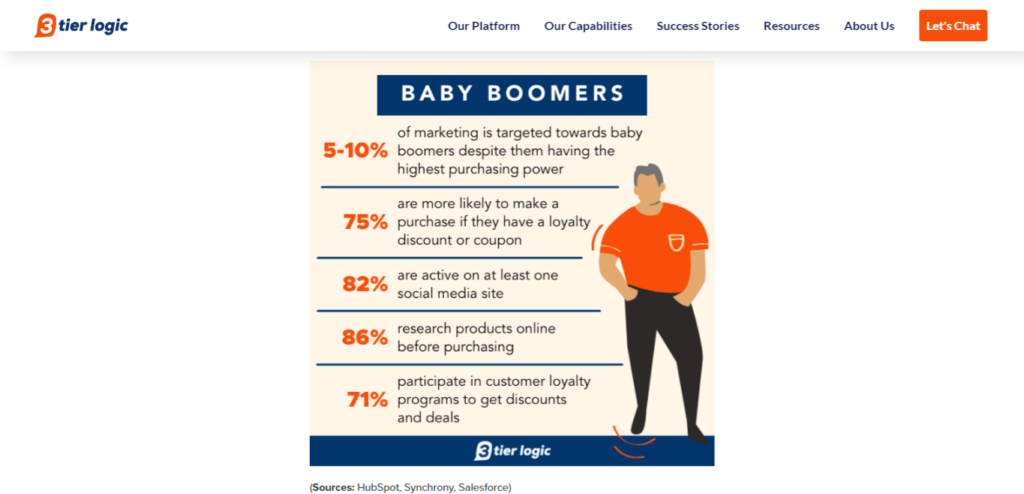
Why is this the case? Why such low marketing expenditure on a generation that, as we’re about to show you, could be incredibly lucrative?
Some marketers think the boomer generation is boring. They’re not sexy. They’re ageing. They’re set in their ways. They’re not tech-savvy. Why even bother?
This is a huge mistake. Boomers can be sexy; they’re not as old as you think, not set in their ways, and incredibly tech-savvy.
Why bother? Because the baby boom generation is probably the hottest age-defined marketing segment you can tap into.
Baby boomers have money
Millennials may have surpassed boomers in numbers, but their average monthly disposable income is a close call.
The average disposable income for millennial-led households is $84,352.
The average disposable income for baby boomer households is $78,508.
However, when you compare them against increased property and rental costs for millennials, it’s feasible that this age group spends significantly more on housing than boomers, who are traditionally more likely to own their homes.
If you want to know who will go through with that credit card purchase online, you should probably bet on baby boomers.
Let’s face it. Most millennials don’t have a lot of money.
So, how does this relate to consumer expenditure?
Perhaps this is where we see the evidence that millennial consumerism and their higher disposable income don’t align:
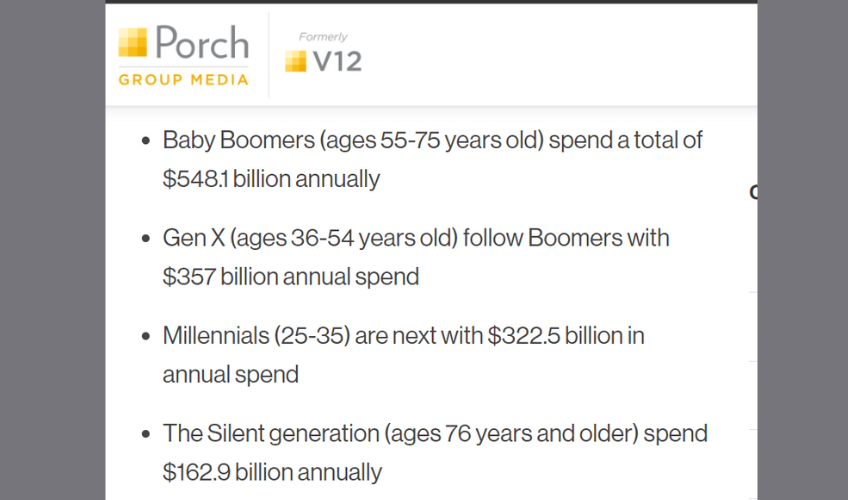
It’s great to energise millennials, but at the end of the day, they don’t have the collective power to turn that energy into money for you.
According to Markets Insider, this will likely compound when more boomers retire and increase that collective spending power.
Baby boomers are on social media, big-time
A big misconception about baby boomers is that they are old and traditional, so they don’t use social media.
In fact, 48% of baby boomers are on social media, likely on more traditional and well-established platforms such as Facebook.
The bottom line is to focus your marketing on Facebook and possibly give TikTok a miss:
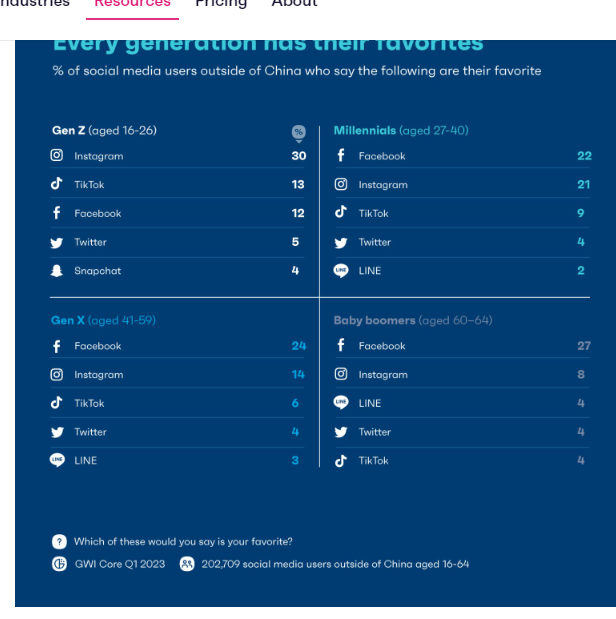
But what do these boomers do on social media?
We think this is fascinating. There’s a generational disparity that shows that boomers consider social media a positive improvement in their lives:
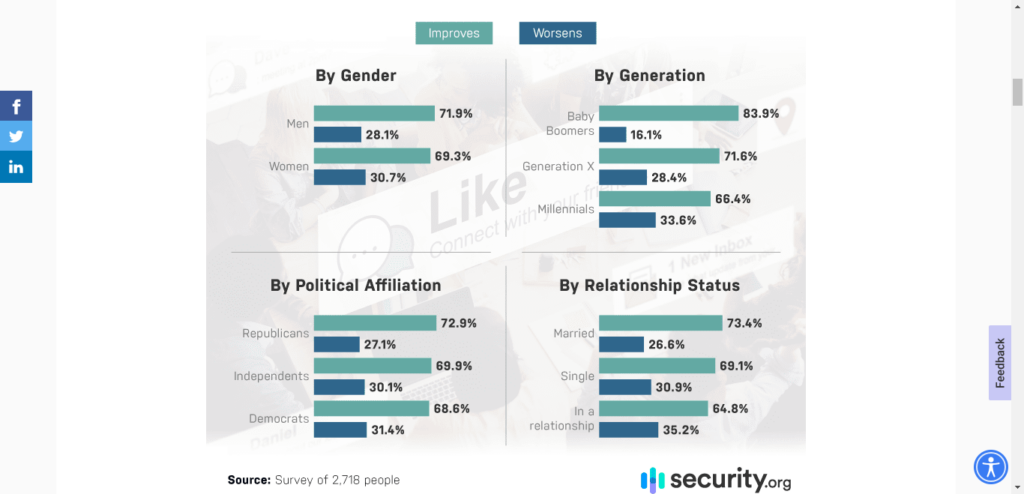
Let’s take this a step further.
This means baby boomers comprise the largest potential viewership of Facebook advertising.
You can target your Facebook ads demographically. When you do so, why not widen the age group to include baby boomers too?
According to The Shelf, boomers are more likely to click on links than other generations:
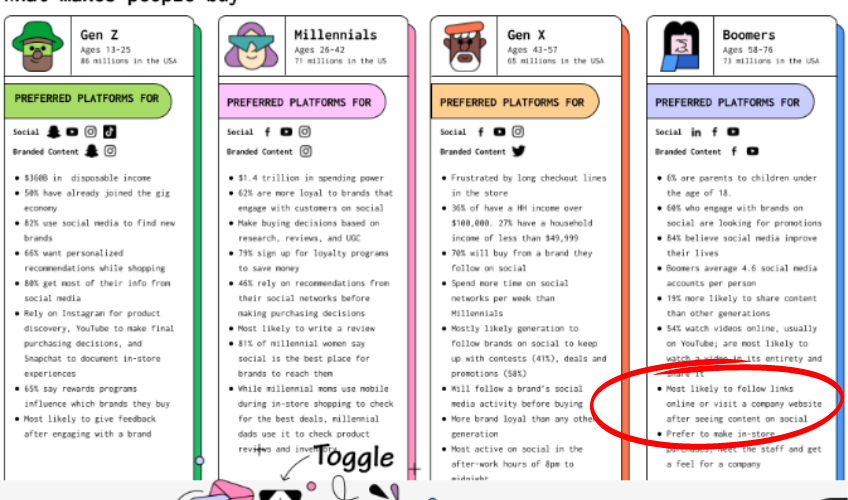
Social media marketing is all about engagement. The data shows us that baby boomers are an incredibly likely source of such engagement.
Baby boomers are making purchases to improve their lifestyles
You have to remember that baby boomers created suburbia as we know it. They bought homes. They left the urban decay of the cities. They began living in comfortable communities.
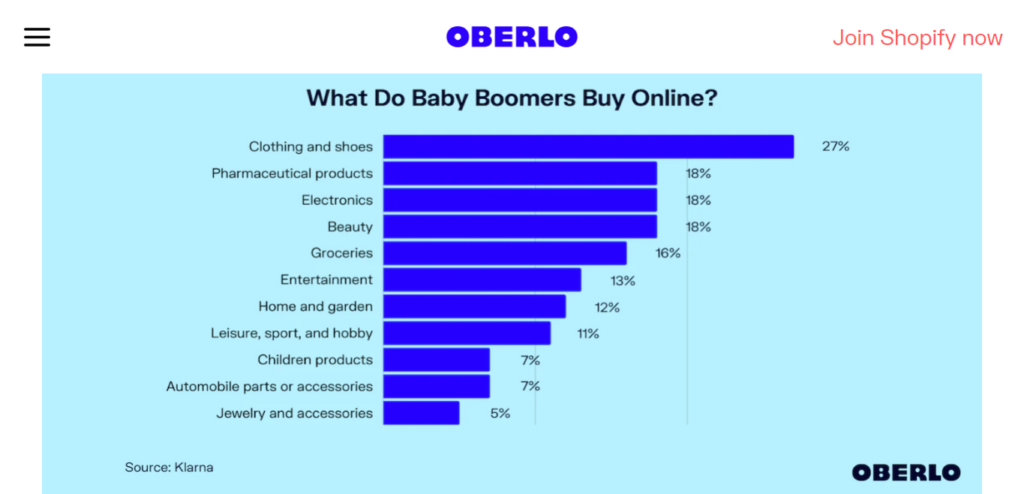
Everyone wants to have fun, right? Millennials, Generation Xers—all of us are eager to have a good time.
But baby boomers, more than any other generation, have both the time and money to spend on comfort, amenities, entertainment, and recreation.
Appeal to these aspirations, and you’ll speak to them in a way that resonates with them.
Boomers buy products and services for others, not just themselves
Boomers love investing in educational products and services, especially for their grandchildren (millennials).
If you can market your products in this way, you’ll grab their attention.
They value education, loyalty, and authenticity; any content or product that fulfills that goal will interest them.
We’ve worked with companies that make apps designed to help parents monitor the health and well-being of small children. (Think baby monitors and associated apps.)
When we dug into the marketing, we discovered that many of their buyers were in the baby boom generation.
Further research showed that many baby boomers had taken on the role of primary caregivers of their grandchildren.
As young parents pursued their careers, these grandparents used their retirement to care for their grandchildren.
And that’s why your parent-focused product or schoolchild-aged toy might benefit from some baby-boomer-targeted advertising.
Boomers are active online shoppers
Boomers are interested in saving money. Besides shopping, they are doing other things online that make life easier. Investment bankers are trying to convert them with the help of this online investing advice, which is an interesting prospect.
With so many of us trying to convince our audiences to invest in our brands, appealing to baby boomers could be a win-win.
Boomers are very tech-savvy
Boomers may have grown up buying everything at a department store and using fax machines, but today, they aren’t afraid of online shopping.
In fact, “66% of people over 50 in the United States routinely make purchases from online retailers.”
And email? They’re all in.
Not only that, but they’re likely to click through and check out the promotion you’re emailing them about.

68% of boomers own smartphones.
They’re not using their smartphones as a glorified landline. They’re shopping, researching, and purchasing.
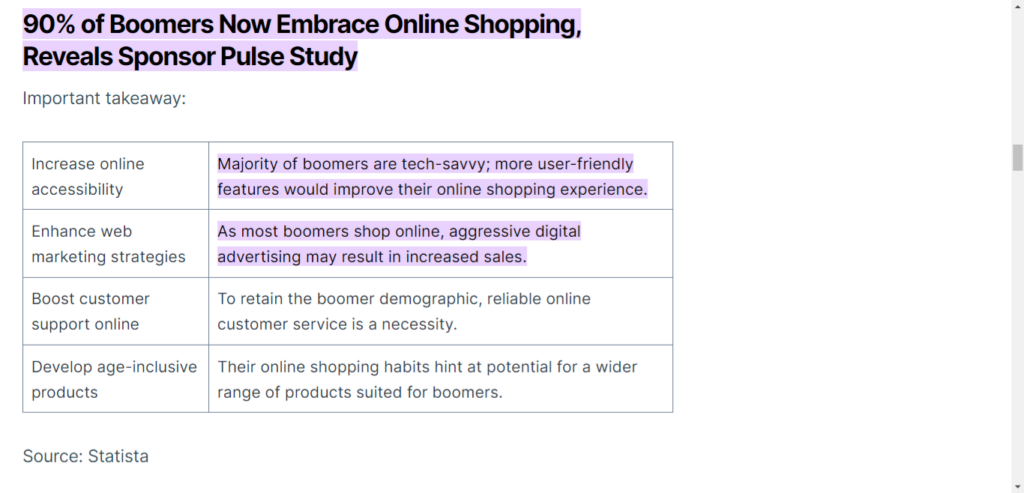
If you’re not marketing to baby boomers on mobile devices, you’re missing out on easy money for your business.
Today, loyalty and a sense of well-being are important to them when choosing companies to give their money to, but you can awaken their nostalgia with a good throwback photo every now and then.
Conclusion
Baby boomers, as a whole, tend to be hard-working people prone to spending money and learning new things.
They want to be informed about the going-ons of the world and interact with their brands personally. They want you to help them when they are troubleshooting, and they count on you to deliver a good product when you say you will.
They’re also willing to wait for your messages and communication much longer than millennials.
They won’t tolerate ignoring them, but they don’t expect you to entertain them constantly.
Knowing these key characteristics of baby boomers is power in your marketing hands because you can tweak your message to appeal to this large group of people.
Don’t fall into the trap of appealing only to millennials with every message.
Baby boomers make up a population that nearly equals the millennials, and they are more active on social media and mobile applications than ever.
Take a long, hard look at your product or service.
Would a baby boomer be interested?
Don’t underestimate this generation. As we saw above, there are very few products or services a baby boomer wouldn’t be interested in.
The least you can do is try. Tweak your messaging, try some new ad targeting, and see what happens.
